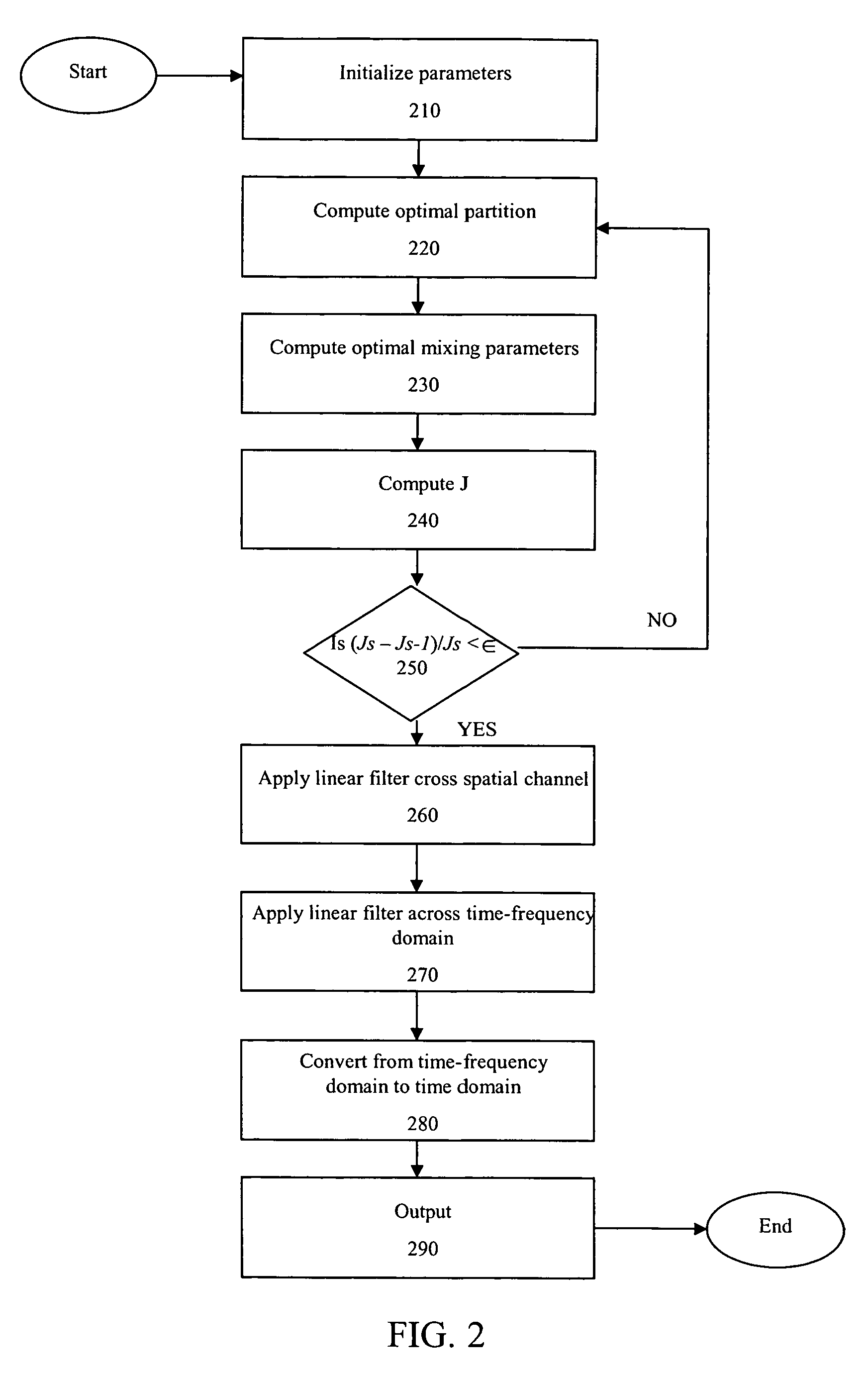System and method for non-square blind source separation under coherent noise by beamforming and time-frequency masking
a beamforming and time-frequency masking technology, applied in the field of blind source separation, can solve problems such as not clearly indicating how to scale, and achieve the effect of reducing output nois
- Summary
- Abstract
- Description
- Claims
- Application Information
AI Technical Summary
Benefits of technology
Problems solved by technology
Method used
Image
Examples
Embodiment Construction
[0019]FIG. 1 is a block diagram of a computer system 100 to which the present invention is applied according to an exemplary embodiment thereof. As shown in FIG. 1, the computer system 100 includes, inter alia, a central processing unit (CPU) 110, a memory 120, an input 130 and an output 140 operatively connected to each other via an input / output interface 150.
[0020]The memory 120 can include random access memory (RAM), read only memory (ROM), disk drive, tape drive, etc., or a combination thereof. The ROM functions as a program memory for storing a program executed in the CPU 110. The RAM functions as a data memory that stores data used during the execution of the program in the CPU 110 and is used as a work area. The input 130 is constituted by a keyboard, mouse, etc. and the output 140 is constituted by a liquid crystal display (LCD), a cathode ray tube (CRT) display, a printer, etc.
[0021]Before describing the maximum likelihood (ML) algorithm for use with the present invention, ...
PUM
 Login to View More
Login to View More Abstract
Description
Claims
Application Information
 Login to View More
Login to View More - R&D
- Intellectual Property
- Life Sciences
- Materials
- Tech Scout
- Unparalleled Data Quality
- Higher Quality Content
- 60% Fewer Hallucinations
Browse by: Latest US Patents, China's latest patents, Technical Efficacy Thesaurus, Application Domain, Technology Topic, Popular Technical Reports.
© 2025 PatSnap. All rights reserved.Legal|Privacy policy|Modern Slavery Act Transparency Statement|Sitemap|About US| Contact US: help@patsnap.com



